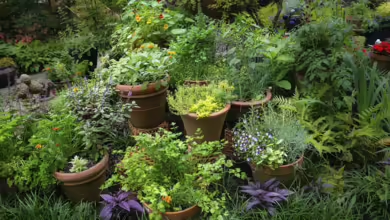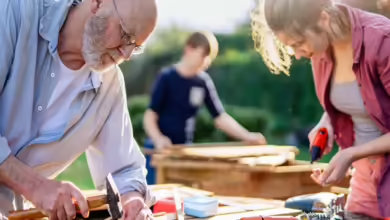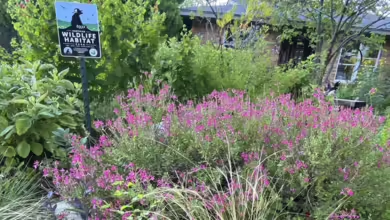Pollinator Gardens—Where Native Plants, Butterflies, and Bees Thrive
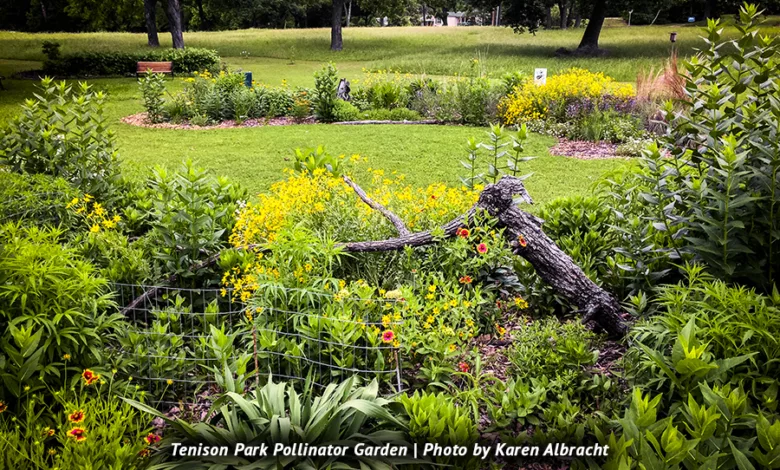
Welcome, spring.
Welcome, sunshine.
Welcome, sweet smells of the season: Of honeysuckle; of dark, lush, fertile soil; of mint and basil and tomato-beckoning oregano.
Welcome, sweet sounds of the season: Of insects humming, bees buzzing, birds singing.
And, if the breeze is gentle enough and you listen closely, I bet you can aurally envision the whisper of a butterfly’s wings.
Such is the magic of spring, when we thrive on the promise and peace this season brings to our psyches as well as to our gardens.
And so, as a thank-you, we feel all but compelled to pinky swear on what any other time of year may seem like the impossible: To change the world so Spring and all her amazing creatures may survive and thrive throughout the year.
If that suddenly burst your wistful spring bubble — Whoa, did I say that? No way can I change the world! — hold on a minute. You can. Your neighbor can. We all can.
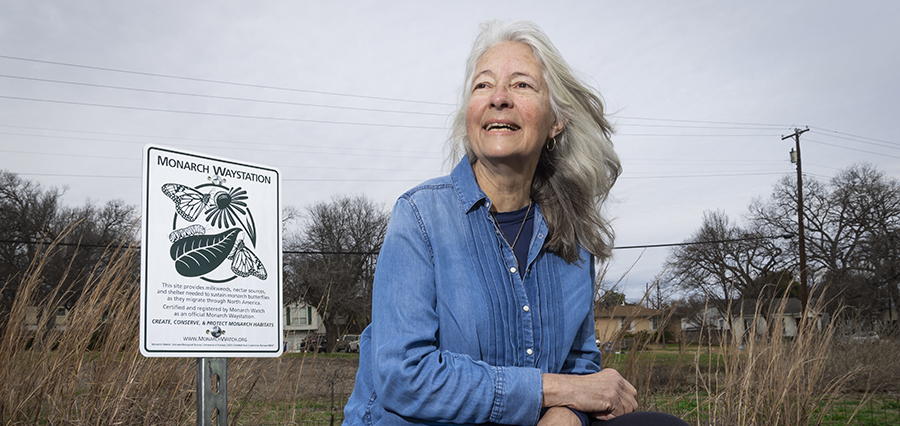
And we must, said Karen Albracht. She’s the founder and administrator of the Tenison Park Pollinator Garden, a 1.9-acre oasis at the north end of Tenison Park in East Dallas.
There’s no concrete inside the Pollinator Garden. Albracht, who worked 8 months to convince the Dallas Park Department to approve the garden, made sure of that. Nor will you find an irrigation system or concentric circles because that’s not how nature intended native plants to grow.
“Native plants have a chemical composition insects need,” said Albracht who, in addition to her roles at the Pollinator Garden, is also a North Texas Master Naturalist.
“That’s the point of a native plant pollinator garden: Restoring habitat lost to urbanization and chemicals, and restoring what was there for these pollinators.”
“When people come to the garden,” she said, “they see bees and dragonflies and go home and have a moment of epiphany. The light bulb goes off.
When they know a little bit, they’re inclined to want to know a little bit more.”
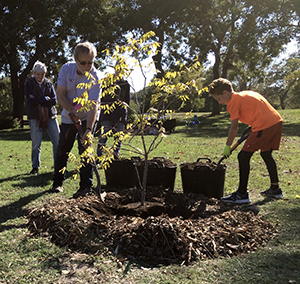
So, every day, she and her cadre of volunteers make sure their visitors learn.
Education is key, she said: The lives of native creatures and plants depend on it.
A little effort goes far, especially if each of us incorporates some simple tips into our gardens.
More to follow shortly, but let’s start with an obvious recipient of our efforts that everyone knows.
This breathtaking stalwart of beauty and grace weighs less than a paper clip and, when spotted, elicits sighs of wonder and delight: the Monarch butterfly.
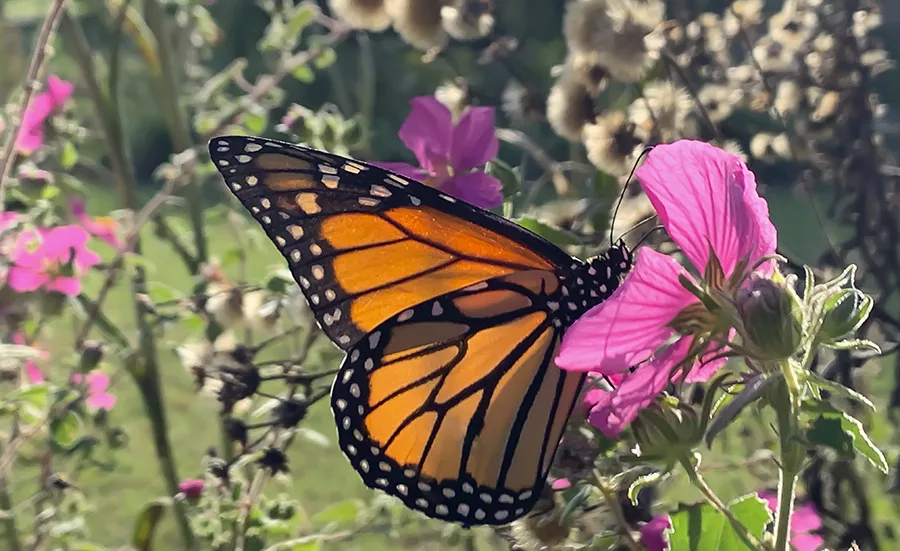
This state insect of Texas begins its multi-country, yearlong journey here and in other southern states, where the first of its four generations are born. That bestows a lot of gleeful responsibility on us Texans.
What we plant, what we do, how we care can keep these beautiful, winged beings alive — flying with breathtaking precision across thousands of miles and back home again.
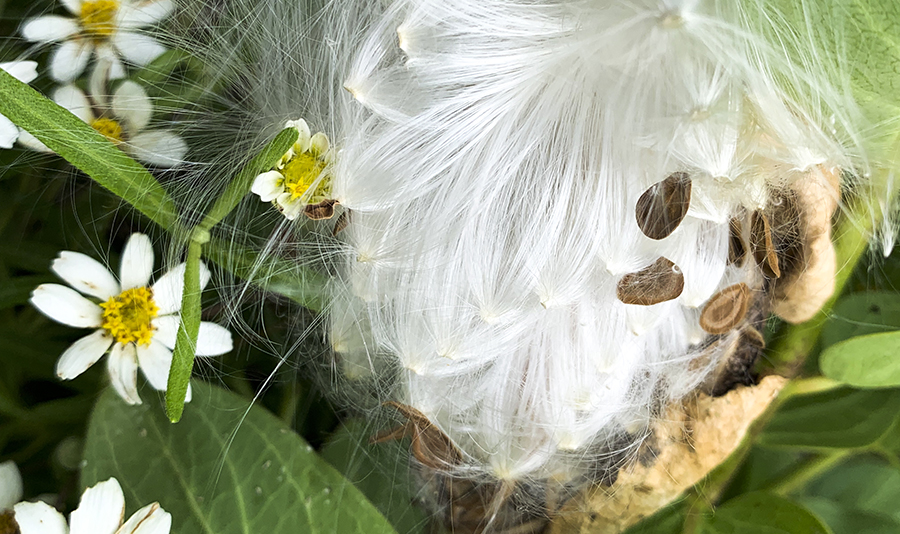
One key to the Monarchs’ success, Albracht said, is milkweed: The two co-evolved for millions of years.
A female caterpillar will only lay eggs on milkweed. When the eggs hatch, the leaves provide the only food source for the Monarch caterpillar.
If milkweed is not available, Monarchs cannot lay eggs. If they don’t lay eggs, they won’t regenerate the species.
Milkweed is a host plant for the Monarch, but also provides nectar for other butterflies and bees. And Texas is home to more than 400 species of butterflies and 800 species of native bees.
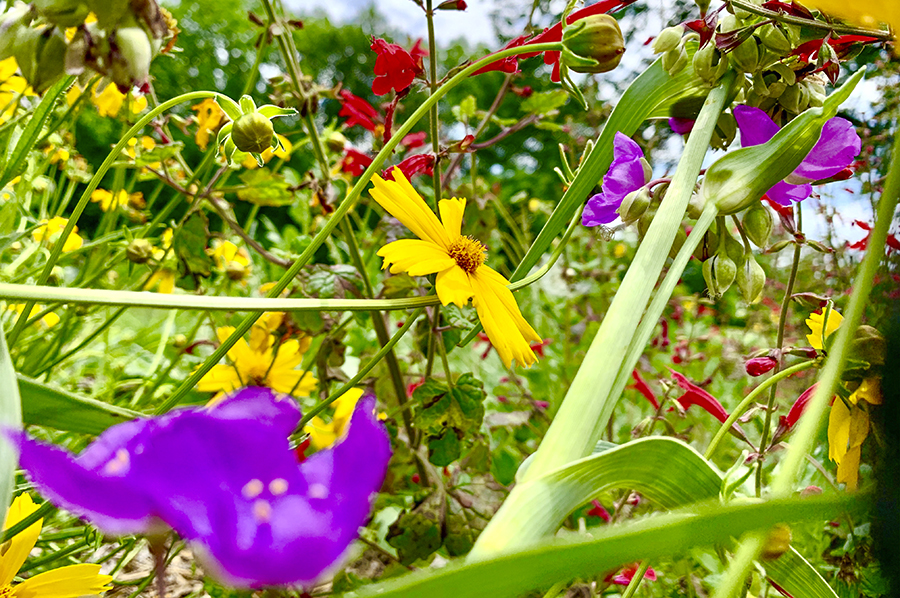
But the Pollinator Garden, at least, is doing its part to protect this cycle. It’s a certified Monarch Butterfly Waystation and two-time recipient of the Bring Back Monarchs to Texas grant program. Albracht has made sure of that.
“Year after year, we have watched the female butterfly float around our garden beds,” she said. “There’s milkweed here, milkweed there, and you can watch how she floats over, surveying all the leaves until she finds milkweed. It’s incredible!”
It’s a matter of understanding the whole cycle, she explained.
She continued: “Human beings are the invasive species. We’ve done a number environmentally in the world with pollution and insecticides and rodenticides. We put out poison for rats and the owl comes along and consumes the rat and the owl becomes poisoned and dies.”
But hope springs eternal, and we human beings are an optimistic bunch. If each of us takes a small step, how can it do anything but good?
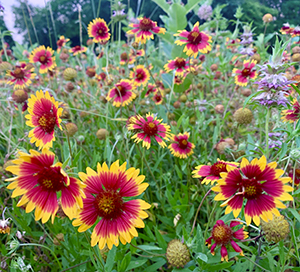
In addition to welcoming spring and all its bounty, here are some suggestions from Albracht to help make the world — and our own gardens — a better place.
- Plant native Texas plants. They’re accustomed to our crazy meteorological roller coaster and are better at weathering heat and frost one week, deluge and dryness the next. Dedicate part of your yard to native, maybe adding a few plants every year or so. Read more on the importance of going native for your plant choices.
- Water less frequently. This encourages roots to dig deep for stability and strength.
- Mow less often. “Turf grasses provide no nectar, no food for birds, no cover because it’s mowed,” Albracht said. “In the Pollinator Garden, we want our plants to offer cover for birds and for animals skittering around and who need a place to hide or hibernate.” Not a bad goal for the rest of our gardens, either.
- Read up on native plants. Albracht recommended Doug Tallamy’s Bringing Nature Home and Nature’s Best Hope.
- Visit local gardens for inspiration. Check out the Laura W. Bush Native Texas Park near SMU and Texas Discovery Gardens in Fair Park. And, of course, the Tenison Park Pollinator Garden.
- Seek out people with similar interests. Albracht recommended going to free meetings at the Native Plant Society of Texas.
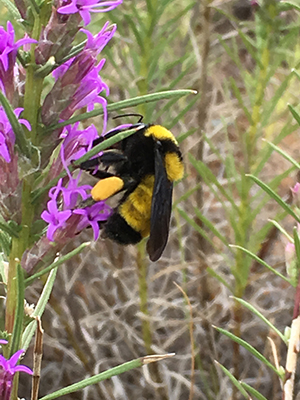
Truly, there is so much to absorb, to learn, to be in awe of when it comes to native plants, and Albracht is happy to share the knowledge.
For instance, they’re either considered host plants or nectar plants; some are even both. Here’s the difference:
- Nectar plants provide a variety of nourishment for moths, butterflies, and bees.
- Host plants provide the only food source for emerging caterpillars.
- Female monarchs, for example, will only lay eggs on milkweed.
- The Giant Swallowtail, North America’s largest butterfly, will only lay eggs on plants in the citrus family.
- Female Black Swallowtails lay eggs only on plants in the carrot family, which include such herbs as dill, fennel, rue, and curly parsley. Plant them in pots in a sunny location near, Albracht suggested, a window so you can keep an eye on the life cycle of the butterfly.
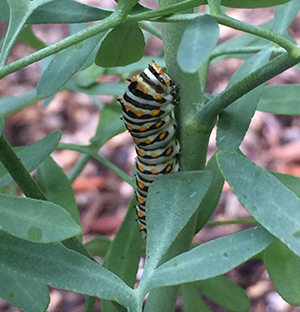
“By providing these host plants,” she said, “we’re helping the insect species today as well as helping generations to come.
Albracht attributes her love of all things in nature to her upbringing, being raised on a family farm in northwest Ohio.
“Being outside was just part of life for us,” she said. “I feel a connection to the land and a deep sense of my role in conserving earth’s natural resources.”


